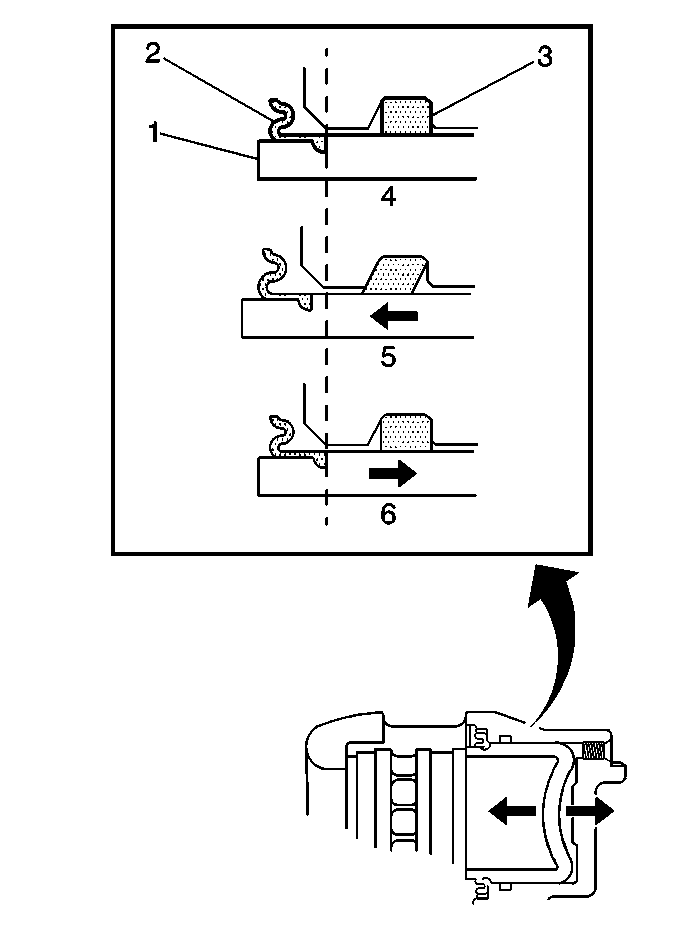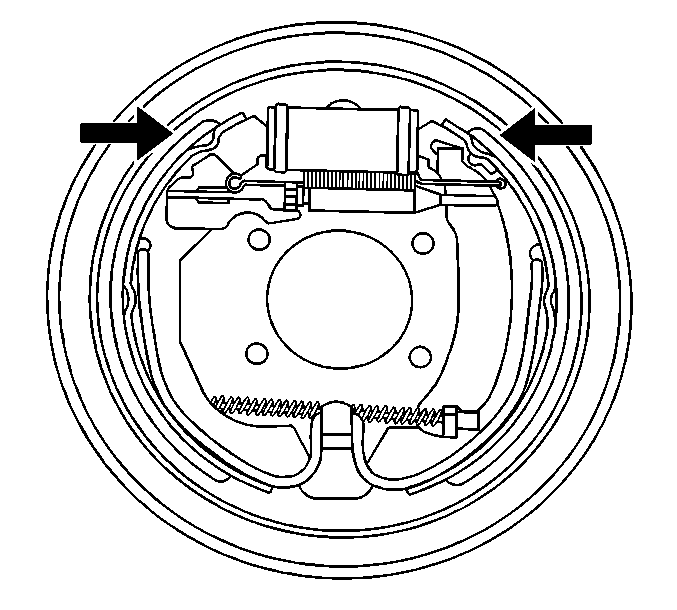Disc Brake

- With the tire and wheel
assemblies removed and the brake rotors retained by wheel lug nuts, visually
inspect the caliper piston dust boot (2) sealing area to ensure that
there are no brake fluid leaks.
- If any evidence of a brake fluid leak is present, the brake caliper
requires overhaul or replacement.
- While the brake system is at rest (4), observe the position
of the caliper piston (1) in relation to the caliper housing.
- Have an assistant apply and release the brake pedal several times
while you observe the operation of the hydraulic brake caliper.
| 4.1. | Observe the caliper piston (1) for unrestricted and even
movement during each apply of the brake system (5). |
| 4.2. | Observe the caliper piston (1) for an unrestricted and
even return motion during each release of the brake system (6). |
- If the caliper piston (1) did not exhibit unrestricted
and even movement during brake system apply and/or release, the piston square
seal (3) may be worn or damaged and the caliper may require overhaul
or replacement.
Drum Brake

- With the rear tire and wheel assemblies
and the brake drums removed, visually inspect the wheel cylinder pistons
boot sealing areas to ensure that there are no brake fluid leaks.
- If any evidence of a brake fluid leak is present, the brake wheel
cylinder requires replacement.
- Using firm hand pressure, simultaneously and evenly apply force
on both brake shoes in order to compress the wheel cylinder pistons into their
bore.
- Evenly release the force from both brake shoes to allow the wheel
cylinder pistons to return.
- If one or both of the wheel cylinder pistons did not exhibit unrestricted
and even movement during apply and/or release of force, the wheel cylinder
may require replacement.


